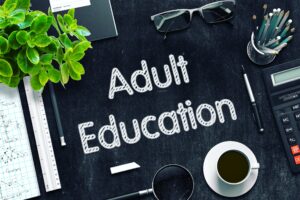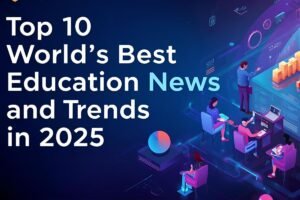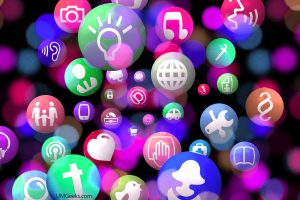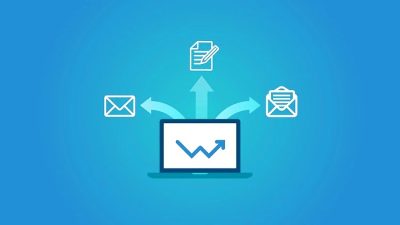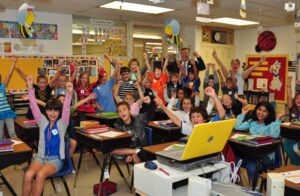The landscape of education is undergoing a seismic transformation in 2025, driven by technological innovation, evolving student needs, and changing workplace demands. As we navigate through this pivotal year, education trends 2025 are not merely incremental improvements but revolutionary shifts that are fundamentally redefining how we teach, learn, and prepare for the future.
The traditional classroom model that dominated the 20th century has given way to dynamic, personalized, and technology-enhanced learning environments that prioritize individual student needs over one-size-fits-all approaches. Educational institutions worldwide are embracing innovative teaching methods that blend artificial intelligence, immersive technologies, and data-driven insights to create more engaging and effective learning experiences.
What makes these future of education trends particularly significant is their timing. We’re witnessing the convergence of mature technologies like artificial intelligence and virtual reality with progressive pedagogical approaches that emphasize critical thinking, creativity, and emotional intelligence. This perfect storm of innovation is creating unprecedented opportunities for educators, students, and institutions to reimagine what’s possible in education.
From personalized AI tutors that adapt to each student’s learning pace to immersive virtual reality field trips that transcend geographical boundaries, the educational technology revolution is democratizing access to world-class learning experiences. Meanwhile, the rise of competency-based education and micro-credentials is challenging traditional degree structures, offering learners more flexible pathways to career success.
In this comprehensive exploration, we’ll delve into ten game-changing shifts that are defining education trends 2025, examining how these innovations are addressing longstanding challenges in education while preparing students for an increasingly complex and rapidly changing world. Whether you’re an educator, administrator, parent, or student, understanding these trends is essential for navigating the evolving educational landscape successfully.
1. Artificial Intelligence-Powered Personalized Learning
Artificial intelligence in education has evolved from a futuristic concept to an everyday reality in 2025. AI-driven platforms now provide personalized learning experiences that adapt in real-time to each student’s strengths, weaknesses, learning pace, and preferred learning style.
These intelligent systems analyze thousands of data points—from assignment completion rates to time spent on specific concepts—to create customized learning paths. When a student struggles with a particular mathematical concept, for instance, the AI tutor automatically adjusts the difficulty level, provides alternative explanations, and offers additional practice problems tailored to that student’s needs.
The impact on student engagement and outcomes has been remarkable. Schools implementing AI-powered learning platforms report significant improvements in test scores, retention rates, and student confidence. More importantly, teachers are freed from repetitive tasks, allowing them to focus on mentorship, emotional support, and fostering critical thinking skills that AI cannot replicate.
2. Hybrid and Flexible Learning Models
The hybrid learning model has matured significantly in 2025, moving beyond emergency remote instruction to become a deliberately designed educational approach. Today’s flexible learning environments seamlessly integrate in-person and online instruction, giving students unprecedented control over when, where, and how they learn.
Progressive institutions are implementing blended learning strategies that leverage the strengths of both modalities. Theoretical content and lectures are often delivered through engaging online modules that students can access at their convenience, while in-person time is reserved for collaborative projects, hands-on experiments, discussions, and personalized support.
This flexibility particularly benefits non-traditional students—working professionals, parents, and those with health considerations—who previously found traditional education inaccessible. The asynchronous learning components allow students to balance education with other life responsibilities while still maintaining meaningful connections with instructors and peers.
3. Immersive Learning Through Virtual and Augmented Reality
Virtual reality in education and augmented reality applications have transformed from novelty to necessity in 2025. These immersive technologies create experiential learning opportunities that were previously impossible or prohibitively expensive.
Medical students now practice complex surgical procedures in risk-free VR environments before entering operating rooms. History students walk through ancient civilizations, experiencing historical events firsthand rather than merely reading about them. Science classes conduct virtual experiments with hazardous materials safely, while geography students explore ocean depths and mountain peaks without leaving their classrooms.
Augmented reality overlays digital information onto the physical world, enhancing traditional learning materials. A biology textbook comes alive with 3D organ models that students can manipulate and examine from every angle. Architecture students visualize their designs at full scale in actual locations. These educational innovations dramatically improve comprehension and retention by engaging multiple senses simultaneously.
4. Competency-Based Education and Micro-Credentials
The shift toward competency-based education represents a fundamental rethinking of how we measure learning and award credentials. Rather than seat time and course completion, 2025’s progressive institutions focus on demonstrable mastery of specific skills and knowledge.
Micro-credentials and digital badges allow learners to document granular skills acquired through various learning experiences—formal courses, professional development, online tutorials, or workplace training. These portable credentials provide employers with clear evidence of specific competencies, making hiring decisions more informed and equitable.
This approach particularly benefits lifelong learners who need to upskill or reskill throughout their careers. Instead of returning to school for years, professionals can earn targeted credentials in months or weeks, immediately applying new knowledge to their work. The skills-based education model better aligns educational outcomes with workforce needs, reducing the skills gap that has plagued many industries.
5. Social-Emotional Learning and Wellbeing Focus
Recognition that academic success depends on emotional and mental health has made social-emotional learning (SEL) a cornerstone of education trends 2025. Schools now systematically teach skills like self-awareness, emotional regulation, empathy, relationship building, and responsible decision-making alongside traditional academics.
Student wellbeing programs have expanded dramatically, incorporating mindfulness practices, stress management techniques, and mental health resources directly into curricula. Many institutions now employ dedicated wellbeing coordinators and have redesigned schedules to reduce overwhelming workloads that contribute to student burnout.
The results speak for themselves: schools with robust SEL programs report decreased behavioral problems, improved attendance, higher academic achievement, and better post-graduation outcomes. Students develop resilience, adaptability, and interpersonal skills that serve them throughout their lives, making them not just better students but more well-rounded individuals.
6. Data-Driven Decision Making and Learning Analytics
Learning analytics have revolutionized how educators understand and support student progress in 2025. Sophisticated data analytics platforms track countless variables—engagement patterns, assessment performance, participation rates, even emotional indicators—providing unprecedented insights into the learning process.
Teachers receive real-time dashboards showing which students are struggling, which concepts need reinforcement, and which instructional strategies are most effective. This evidence-based teaching approach removes guesswork from instruction, allowing educators to intervene proactively before students fall behind.
Institutional leaders use educational data to make strategic decisions about curriculum design, resource allocation, and program effectiveness. Predictive analytics identify at-risk students early, triggering support interventions that dramatically improve retention rates. The challenge lies in balancing data utilization with privacy concerns, requiring robust ethical frameworks and transparent policies.
7. Project-Based and Experiential Learning
Project-based learning (PBL) has moved from alternative pedagogy to mainstream practice in 2025. This approach engages students in complex, real-world challenges that require sustained inquiry, collaboration, and creative problem-solving.
Rather than memorizing disconnected facts, students working on experiential learning projects apply knowledge from multiple disciplines to address authentic problems. They might design sustainable housing for their community, develop apps addressing local needs, or create social enterprises tackling environmental challenges.
These hands-on learning experiences develop critical competencies that employers value: creativity, collaboration, communication, and critical thinking. Students build impressive portfolios demonstrating their capabilities, often more persuasive to admissions officers and hiring managers than traditional transcripts alone. The engagement factor is undeniable—students invest deeply in projects they find meaningful and relevant to their lives.
8. Gamification and Game-Based Learning
Gamification in education leverages game design principles to increase motivation and engagement. In 2025, thoughtfully designed game-based learning platforms transform potentially tedious practice into compelling experiences that students eagerly pursue.
Points, badges, leaderboards, quests, and narrative structures tap into intrinsic motivators like achievement, progression, and social connection. Math practice becomes an adventure where solving problems unlocks new worlds. Language learning transforms into missions requiring communication skills to succeed.
Research consistently shows that educational games increase time-on-task, improve retention, and develop problem-solving skills. The key is integration—games work best when aligned with learning objectives and complemented by reflection activities that help students transfer game-based skills to other contexts. Well-designed gamified learning experiences don’t trivialize education; they make it more accessible and enjoyable.
9. Collaborative and Global Learning Networks
Technology has enabled collaborative learning on an unprecedented scale in 2025. Students from different continents now work together on shared projects, developing cultural competence and global perspectives while tackling complex challenges.
Global learning networks connect classrooms worldwide, allowing students to learn languages from native speakers, understand different cultural viewpoints firsthand, and develop the international mindset essential for 21st-century citizenship. Environmental science students collaborate with peers facing different climate challenges; literature students discuss texts with readers from diverse cultural backgrounds.
These international education partnerships prepare students for increasingly globalized workplaces while fostering empathy and cross-cultural understanding. Video conferencing, collaborative digital workspaces, and translation technologies make such connections seamless, while structured curricula ensure meaningful learning rather than superficial exchanges.
10. Sustainable and Green Education Initiatives
Sustainability in education has evolved from occasional mentions in science classes to comprehensive integration across curricula in 2025. Students learn environmental responsibility not just theoretically but through green campus initiatives and sustainability-focused projects.
Schools are living laboratories for sustainable practices—solar panels, rainwater harvesting systems, organic gardens, and zero-waste cafeterias provide hands-on learning opportunities while reducing environmental impact. Students participate in environmental education programs that connect classroom learning with real-world application.
Curricula increasingly emphasize systems thinking, helping students understand interconnections between environmental, social, and economic systems. This sustainability-focused learning prepares graduates to address the defining challenge of their generation—climate change—while instilling habits and values that promote environmental stewardship throughout their lives.
Conclusion
The education trends 2025 outlined here represent more than technological upgrades or pedagogical fads—they constitute a fundamental reimagining of what education can and should be. As we’ve explored, the convergence of educational technology, progressive teaching methodologies, and holistic approaches to student development is creating more personalized, engaging, and effective learning experiences than ever before.
These transformative shifts address longstanding educational challenges—inequitable access, one-size-fits-all instruction, disconnection between school and real-world application—while preparing students for a future characterized by rapid change and complex global challenges. The future of learning is more flexible, inclusive, technology-enhanced, and focused on developing the whole person rather than simply transmitting information.
For educators, administrators, and policymakers, embracing these trends requires courage, investment, and willingness to challenge traditional assumptions about teaching and learning. For students and families, understanding these developments helps navigate educational choices and advocate for innovative approaches. The promise of 21st-century education is within reach—an education system that truly serves every learner and prepares them not just for tests but for meaningful, successful lives.
Read More: Free Adult Education 7 Amazing Breakthroughs in 2025




